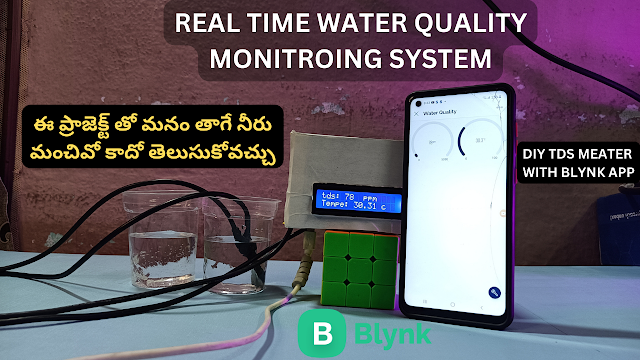Introduction:
Discover how to create a robust location tracker using the ESP8266 WiFi module and the Neo-6 GPS module. This comprehensive guide walks you through the process, making it a perfect project for tech enthusiasts and hobbyists. Learn about GPS technology, microcontrollers, and wireless communication while crafting your own real-time tracking solution.
circuit connection:
Connect the Neo-6 GPS module to the ESP8266:
VCC to 3.3V
GND to GND
TX to RX
RX to TX
Coding:
Write code to read GPS data and transmit it via WiFi. Include GPS parsing and WiFi libraries. Set up WiFi connection and server details.
#include <ESP8266WiFi.h>
#include <TinyGPS++.h>
#include <SoftwareSerial.h>
#include "Adafruit_MQTT.h"
#include "Adafruit_MQTT_Client.h"
static const int RXPin = 4, TXPin = 5;
static const uint32_t GPSBaud = 9600;
// The TinyGPSPlus object
TinyGPSPlus gps;
// The serial connection to the GPS device
SoftwareSerial softSerial(RXPin, TXPin);
// WiFi parameters
#define WLAN_SSID "veera"
#define WLAN_PASS "87654321"
// Adafruit IO
#define AIO_SERVER "io.adafruit.com"
#define AIO_SERVERPORT 1883
//Enter the username and key from the Adafruit IO
#define AIO_USERNAME "meworks7474"
#define AIO_KEY "aio_KmNl67Gem2uZP5PGjsHRPd0ufdZl"
WiFiClient client;
// Setup the MQTT client class by passing in the WiFi client and MQTT server and login details.
Adafruit_MQTT_Client mqtt(&client, AIO_SERVER, AIO_SERVERPORT, AIO_USERNAME, AIO_KEY);
Adafruit_MQTT_Publish GPSLocation = Adafruit_MQTT_Publish(&mqtt, AIO_USERNAME "/feeds/location/csv");
float speed_mph = 0;
float alltitude = 0;
float lati; //Storing the Latitude
float longi; //Storing the Longitude
char gpsdata[120];
void setup() {
// put your setup code here, to run once:
Serial.begin(115200);
softSerial.begin(GPSBaud);
Serial.print(F("Connecting to "));
Serial.println(WLAN_SSID);
WiFi.begin(WLAN_SSID, WLAN_PASS);
while (WiFi.status() != WL_CONNECTED) {
delay(500);
Serial.print(F("."));
}
Serial.println();
Serial.println(F("WiFi connected"));
Serial.println(F("IP address: "));
Serial.println(WiFi.localIP());
// connect to adafruit io
connect();
}
// connect to adafruit io via MQTT
void connect() {
Serial.print(F("Connecting to Adafruit IO... "));
int8_t ret;
while ((ret = mqtt.connect()) != 0) {
switch (ret) {
case 1: Serial.println(F("Wrong protocol")); break;
case 2: Serial.println(F("ID rejected")); break;
case 3: Serial.println(F("Server unavail")); break;
case 4: Serial.println(F("Bad user/pass")); break;
case 5: Serial.println(F("Not authed")); break;
case 6: Serial.println(F("Failed to subscribe")); break;
default: Serial.println(F("Connection failed")); break;
}
if(ret >= 0)
mqtt.disconnect();
Serial.println(F("Retrying connection..."));
delay(10000);
}
Serial.println(F("Adafruit IO Connected!"));
}
void loop() {
// put your main code here, to run repeatedly:
if(! mqtt.ping(3)) {
// reconnect to adafruit io
if(! mqtt.connected())
connect();
}
getCoordinates();
Serial.print("Lati = ");
Serial.print(lati,6);
Serial.print("\tLongi = ");
Serial.println(longi,6);
if (!GPSLocation.publish(gpsdata)) { //Publish to Adafruit
Serial.println(F("Failed"));
}
else {
Serial.println(F("Sent!"));
}
delay(5000);
}
void getCoordinates()
{
readGPSData();
char *p = gpsdata;
// add speed value
dtostrf(speed_mph, 2, 6, p);
p += strlen(p);
p[0] = ','; p++;
// concat latitude
dtostrf(lati, 2, 6, p);
p += strlen(p);
p[0] = ','; p++;
// concat longitude
dtostrf(longi, 3, 6, p);
p += strlen(p);
p[0] = ','; p++;
// concat altitude
dtostrf(alltitude, 2, 6, p);
p += strlen(p);
// null terminate
p[0] = 0;
}
void readGPSData()
{
if(gps.location.isValid()){
lati = gps.location.lat();
longi = gps.location.lng();
Serial.print("Lati: ");
Serial.print(lati,6);
Serial.print("\tLongi: ");
Serial.println(longi,6);
}
waitGPS(1000);
if (millis() > 5000 && gps.charsProcessed() < 10)
Serial.println("Waiting for data...");
}
static void waitGPS(unsigned long ms)
{
unsigned long start = millis();
do
{
while (softSerial.available())
gps.encode(softSerial.read());
} while (millis() - start < ms);
}
Conclusion:
Crafting a location tracker with the ESP8266 and Neo-6 GPS module is an engaging project bridging hardware, software, and connectivity. This guide offers a rewarding experience to learn about GPS technology, wireless communication, and server interaction. With your functional tracker, you can unlock endless possibilities for applications. Embark on this exciting journey today, creating a personalized real-time location tracking solution that showcases your technical prowess.










0 Comments